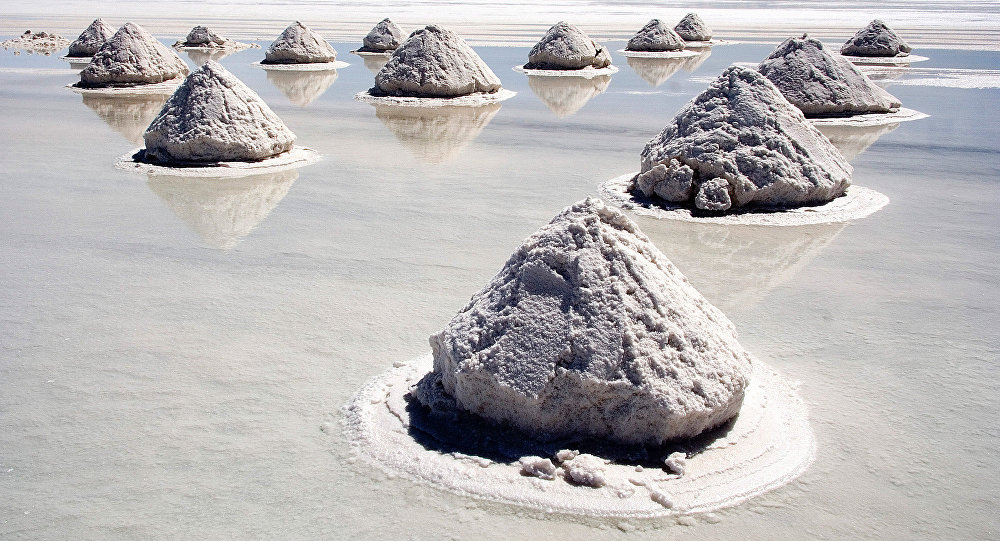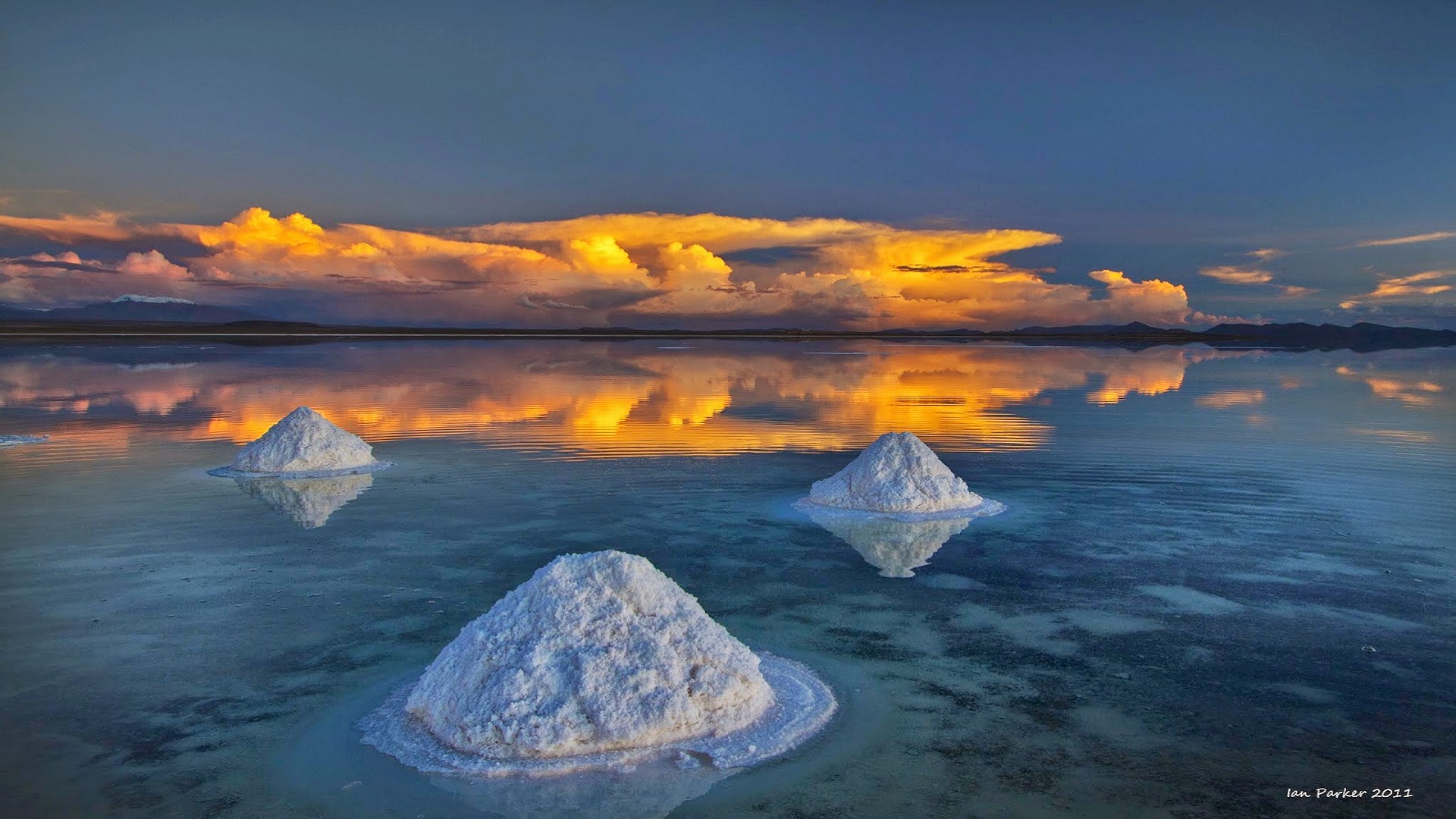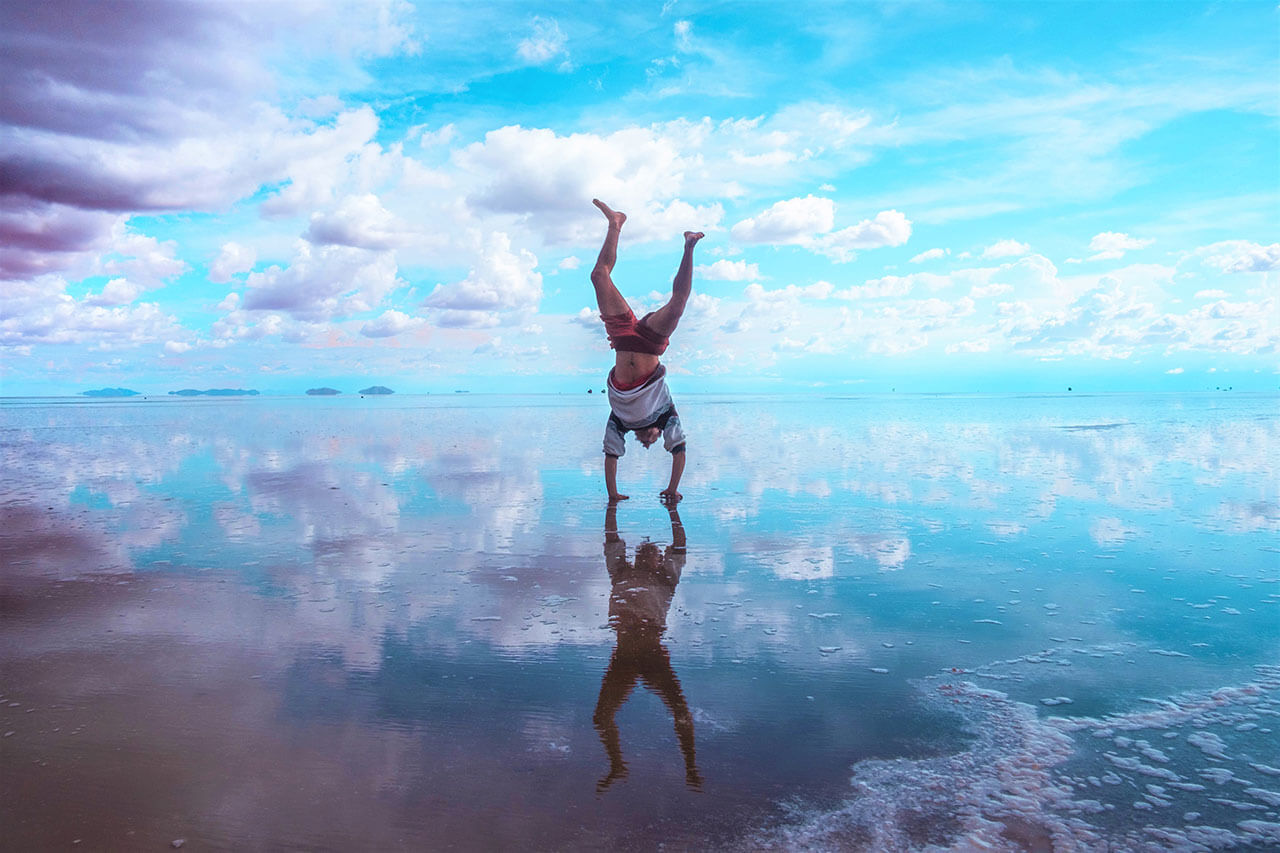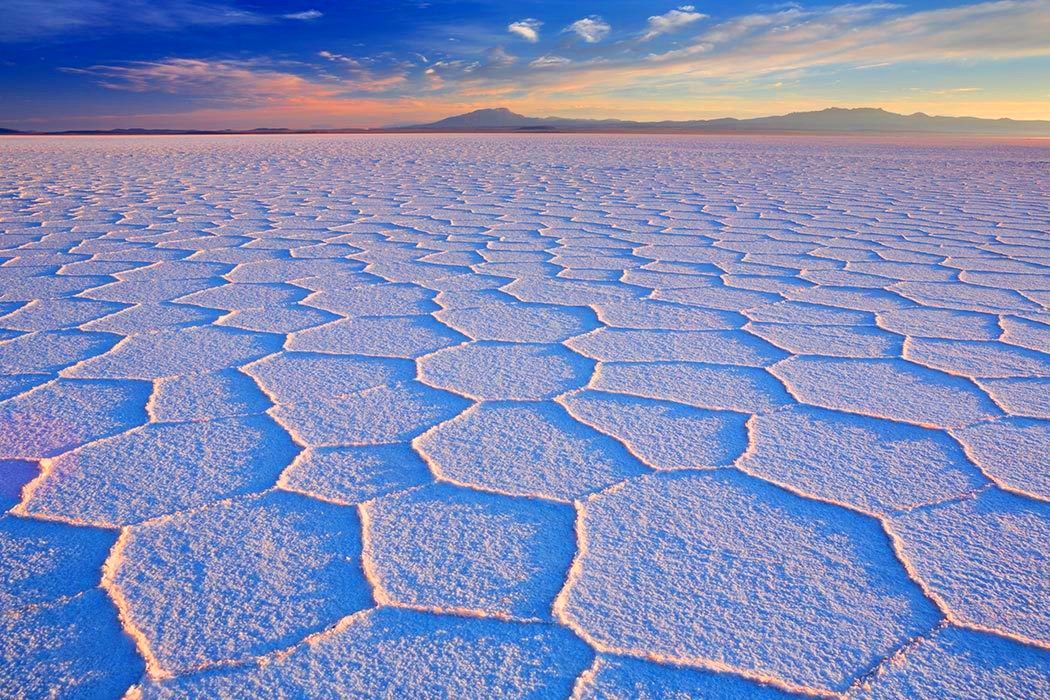The universe is sometimes a mirror. An eye looking at a blue still body of water reminds this universe that man must see himself through the most extraordinary nature. Another wonderful resource that nature has gifted to man that needs to be protected is found in Bolivia. The colors here are so similar that it seems that the transparent crystal earth and the blue sky, running endlessly to infinity, are not two but one. The earth is so transparent that its own image is visible on the surface of the standing earth. W. K. m. Salar de Uyuni (or Salar de Tunupa) is the world’s largest Bolivian salt lake spanning 10,582 km. This is like a mirror frozen in time. Located in the southwestern part of the Andes region of Bolivia, standing on this wonderful natural mirror, one feels as if he is standing in a magical scene. The salt layer here is sometimes 10 meters thick.
This amazing event, a wonderful mix of water and salt layers. There is a kind of combination of geological layers here that can surprise an explorer of this land. This area exists in two forms in two periods. At one time, this land appeared as a salt mound with a dry, dry appearance. At other times, it appears in a wet manner. At this stage, a small layer of water forms above the salt layer. But this is not so dense. A very small layer of water that even a vehicle can drive over this land. In some cases, it is difficult even to separate the sky and this earth from a distance. It creates such a wonderful scene. During the period from May to November, the salt water evaporates here. You can see condensed layers of salt there. It remains covered with a layer of water till May.

This beautiful land is located near the small town of Uyuni. The small town can be reached by air. A small airport is also located in this small town. There are flights from La Paz, the capital of Bolivia, to Uyuni. Visitors to this area usually stay here for three to four days. A land crusher car service is also in operation to take tourists around the area. The authorities have focused on preventing the pollution of this area due to the influx of tourists. Travelers try to build temporary tents to enjoy the sweetness of this environment. It is a big threat to the ecological balance of that area. As a result, it has been legally banned. Instead, tourists have been told to stay at the licensed lodges established nearby. Not only the world’s largest salt lake, the world’s largest lithium reserve is also located in this region. Between 50% – 70% of lithium is supplied from this area.

There are some essential materials and tools that visitors to this area should carry. Flashlights and toilets in the area are charged for use, coins required to provide them, seemingly endless layers of salt that are blindingly bright, sunglasses, cameras, extra drinking water, sun protection to avoid blindness Covers and ointments to protect the skin, sleeping bags, warm clothes to keep the body warm, hot water bottles to use at night because the nights are extremely cold are among the items that should never be forgotten.

About 40,000 years ago, this event has been a part of Minchan Lake. It is a large lake that existed in prehistoric times, and later that lake has dried up. After the lake dried up, two new lakes named Poopó and Uru Ur were created in this area, and two salt deserts named Salar de Coipasa and Yuuni were also created. The largest of these is the Yuuni Salt Desert. The Eunice Salt Desert is twenty-five times the size of the Bonneville Salt Flats in the United States. There are more than 10 billion tons of salt here. About 25,000 tons of salt is obtained annually.




